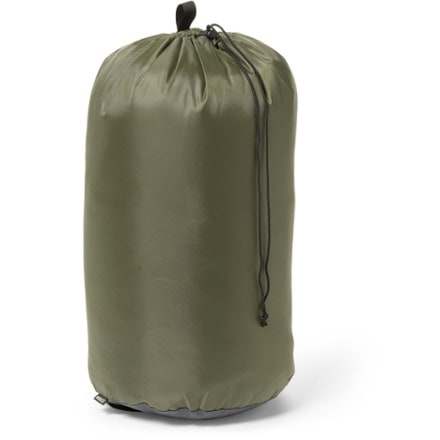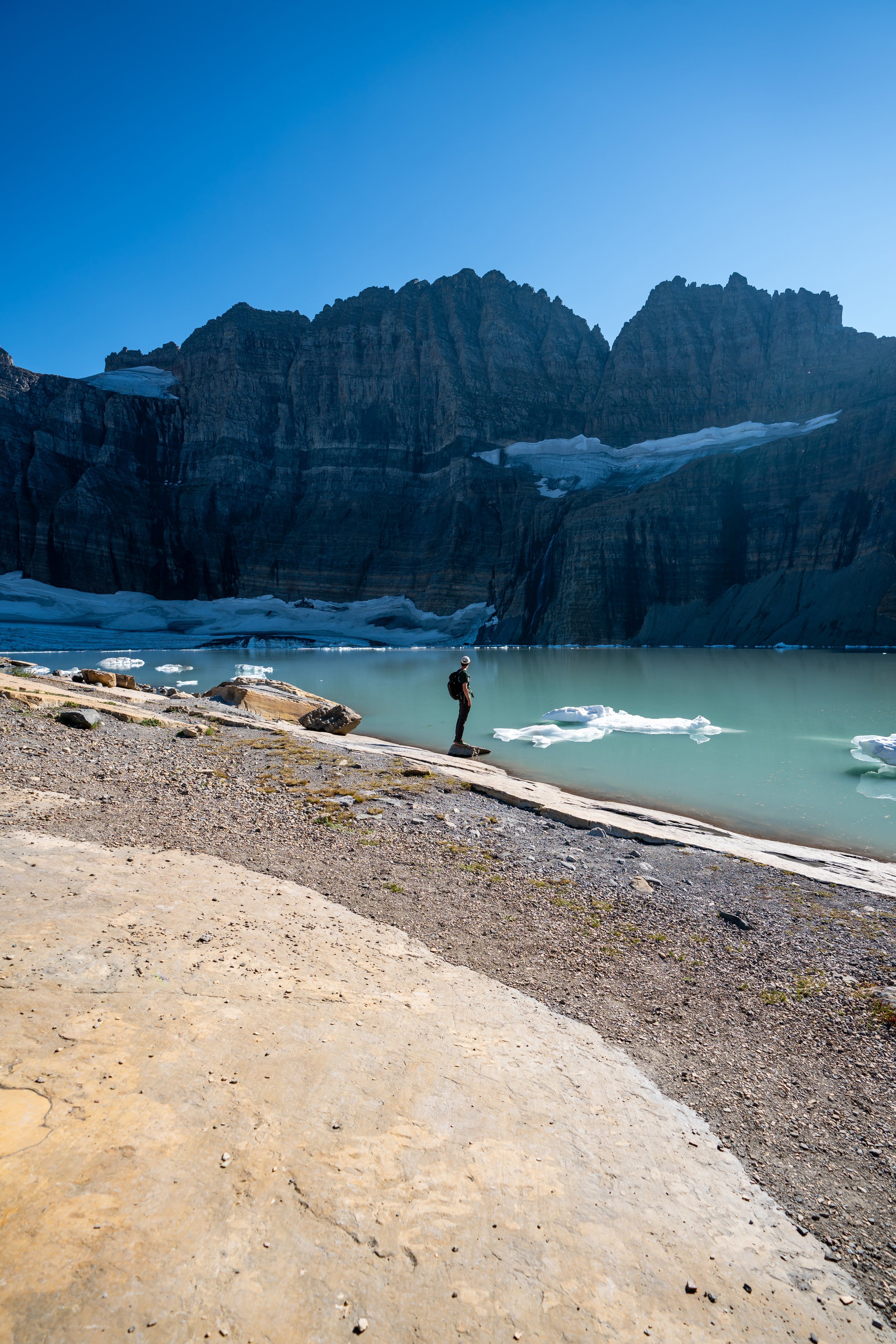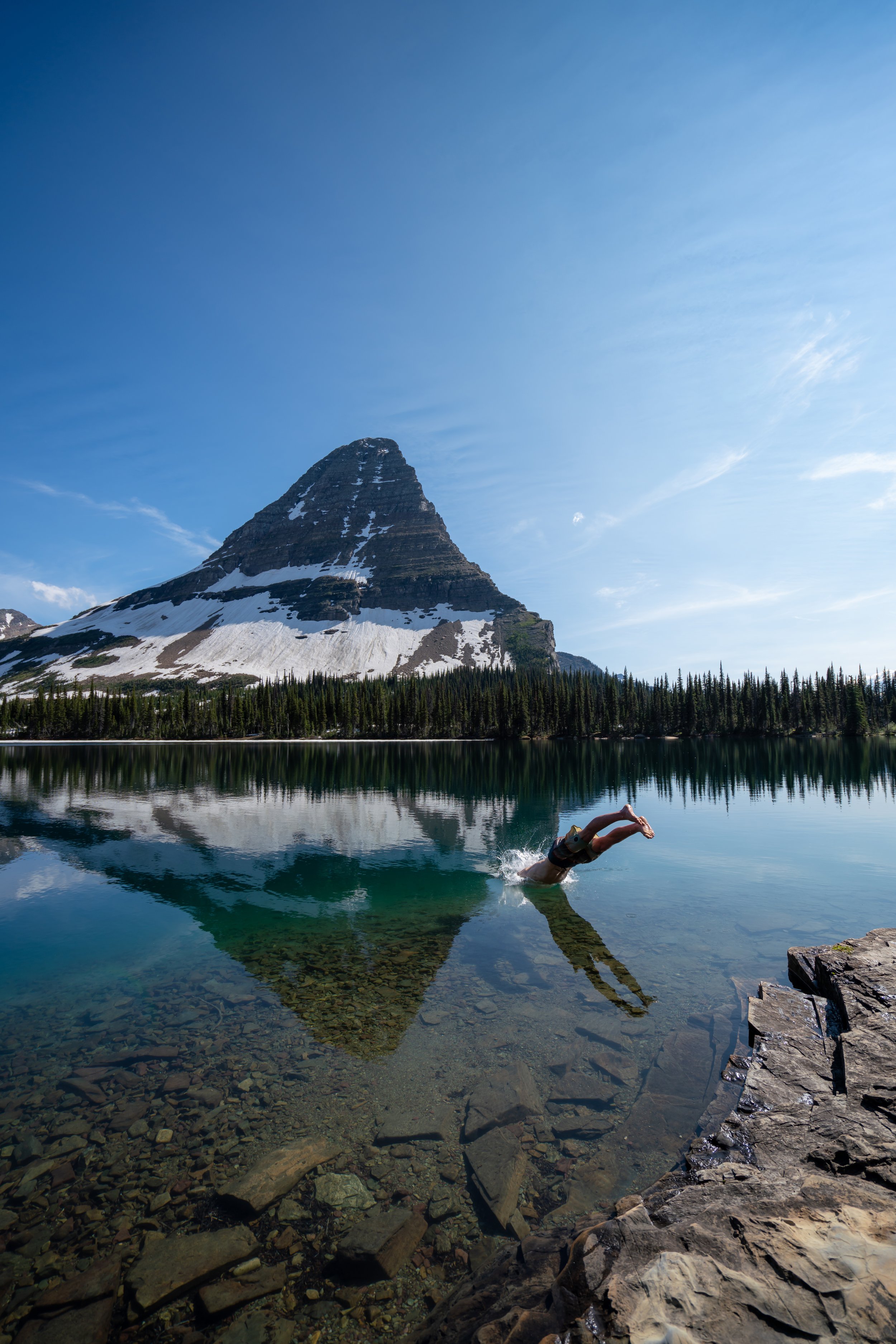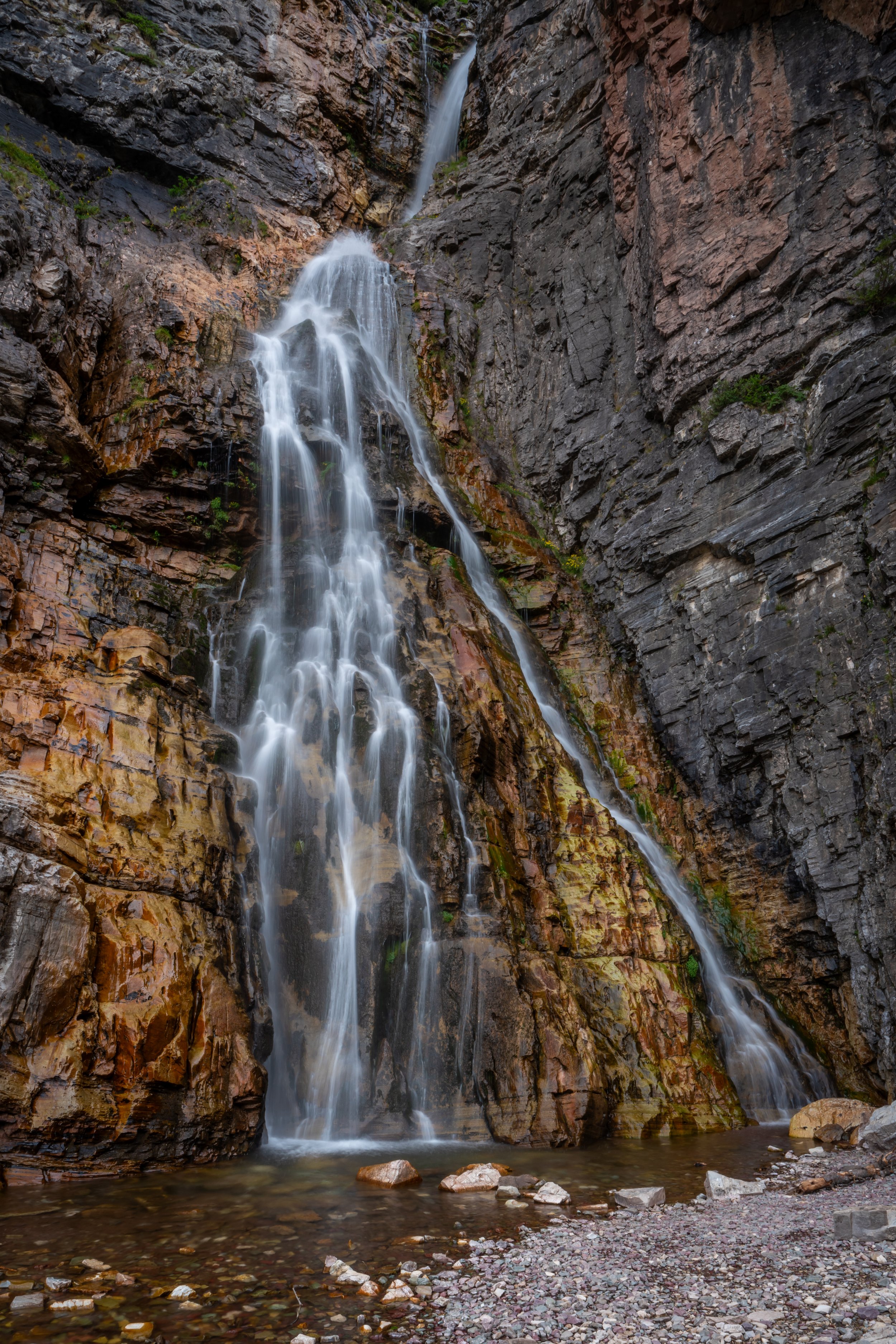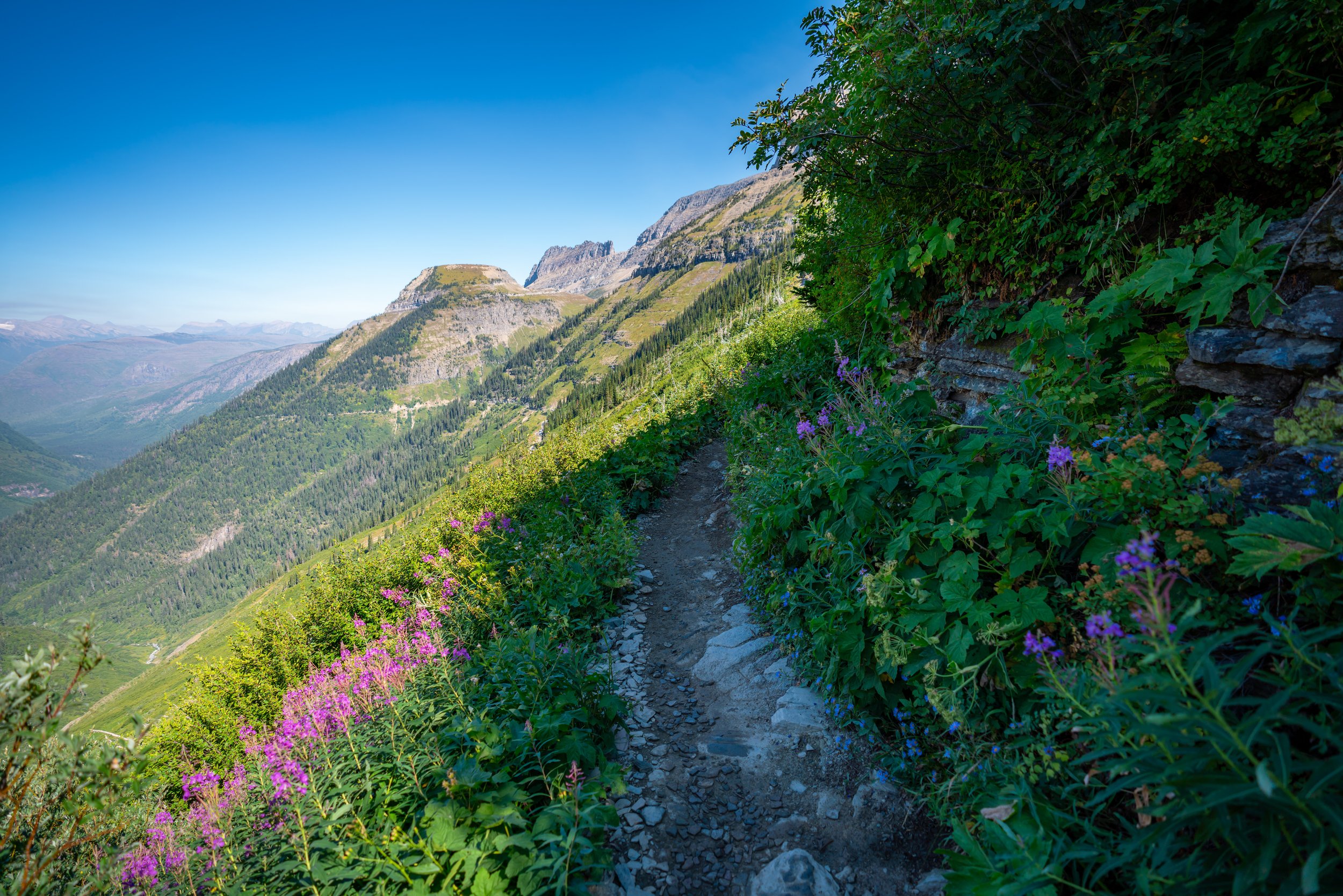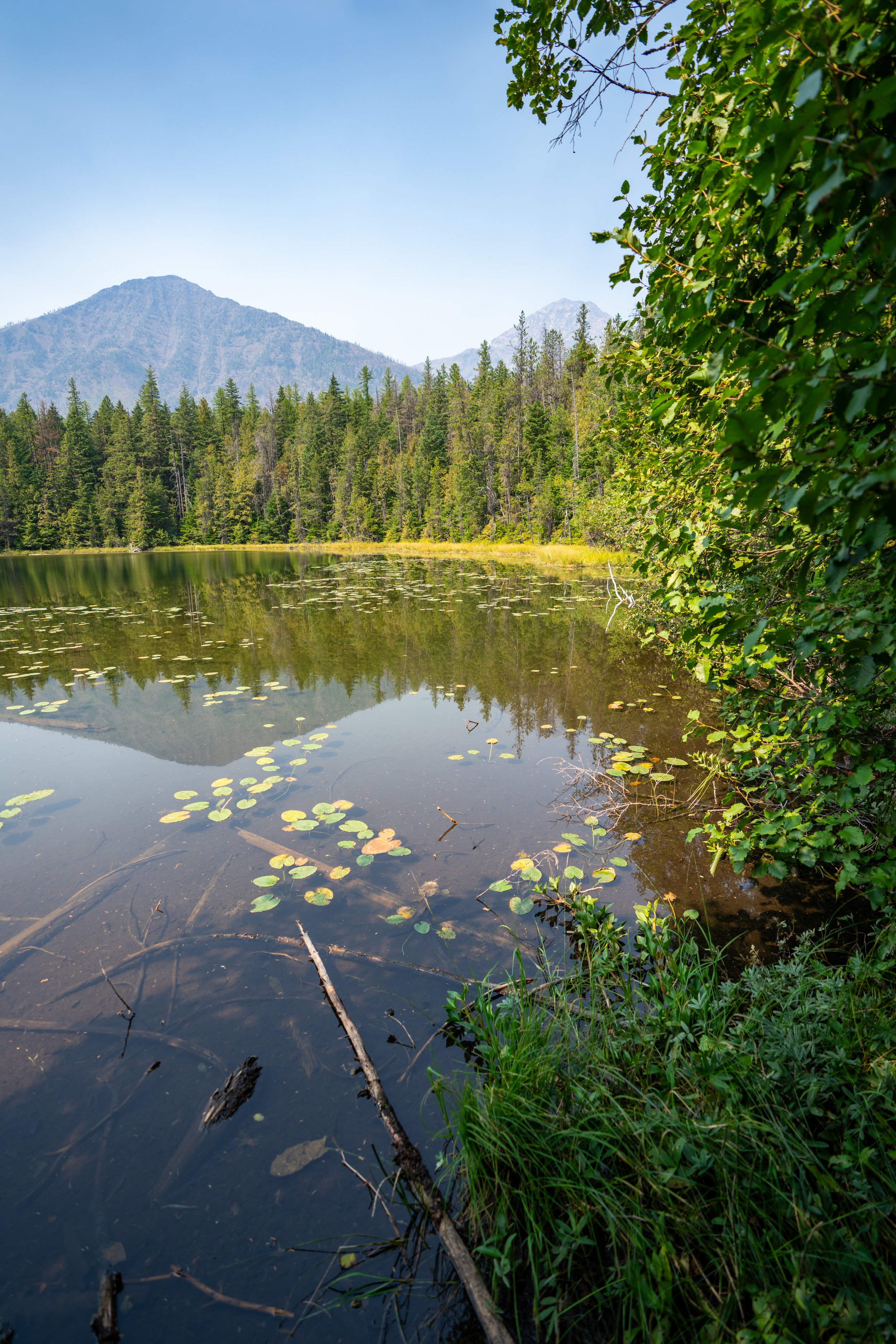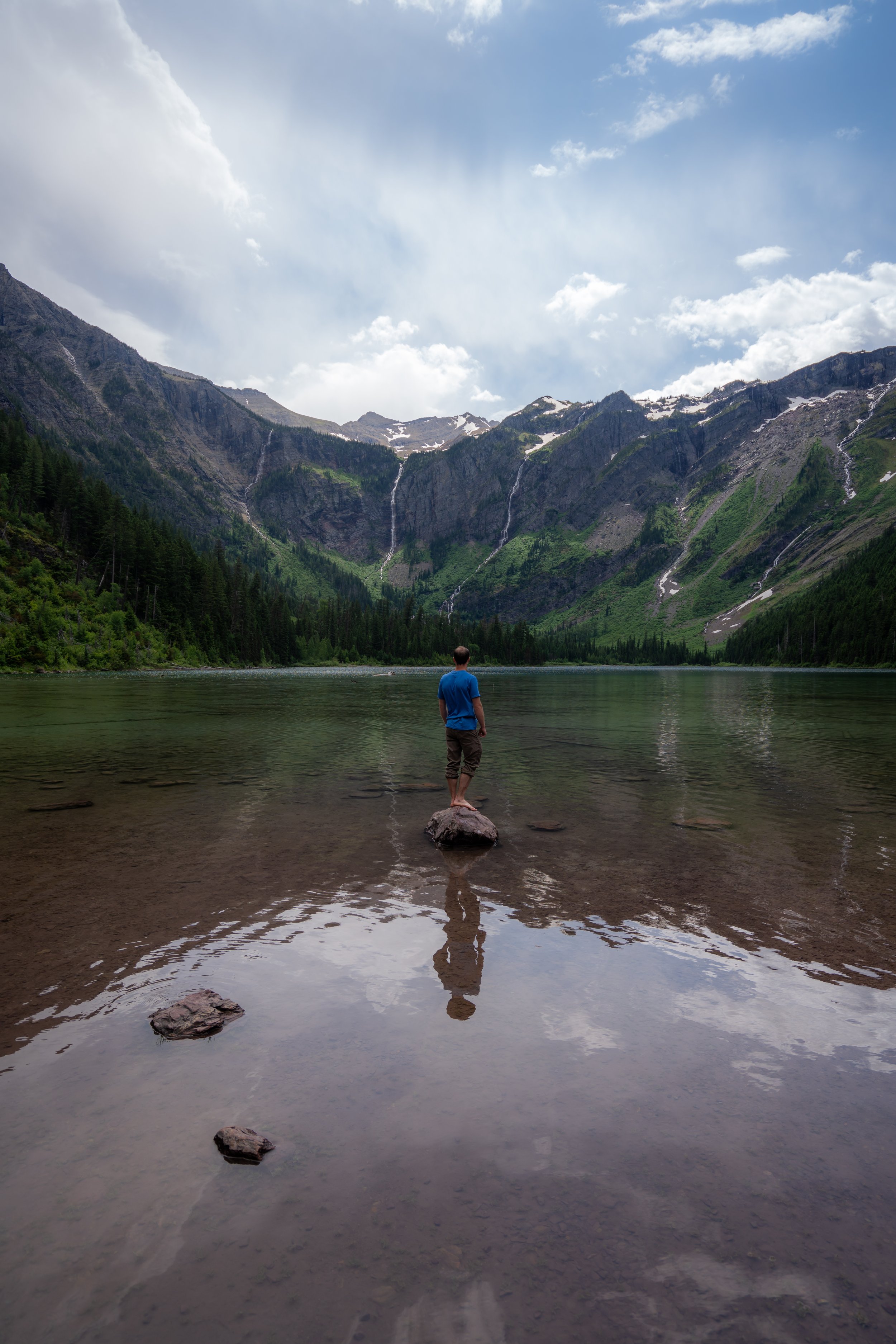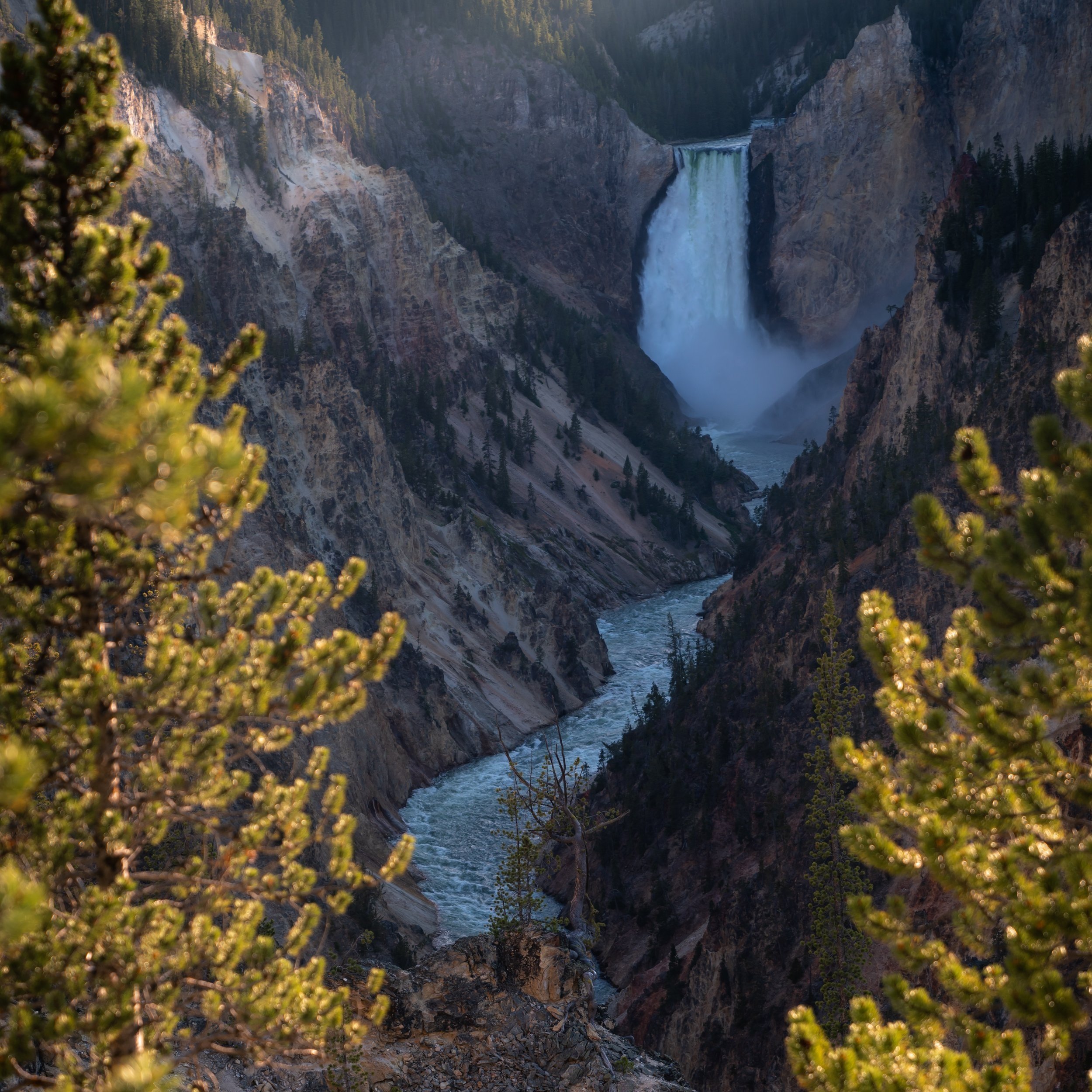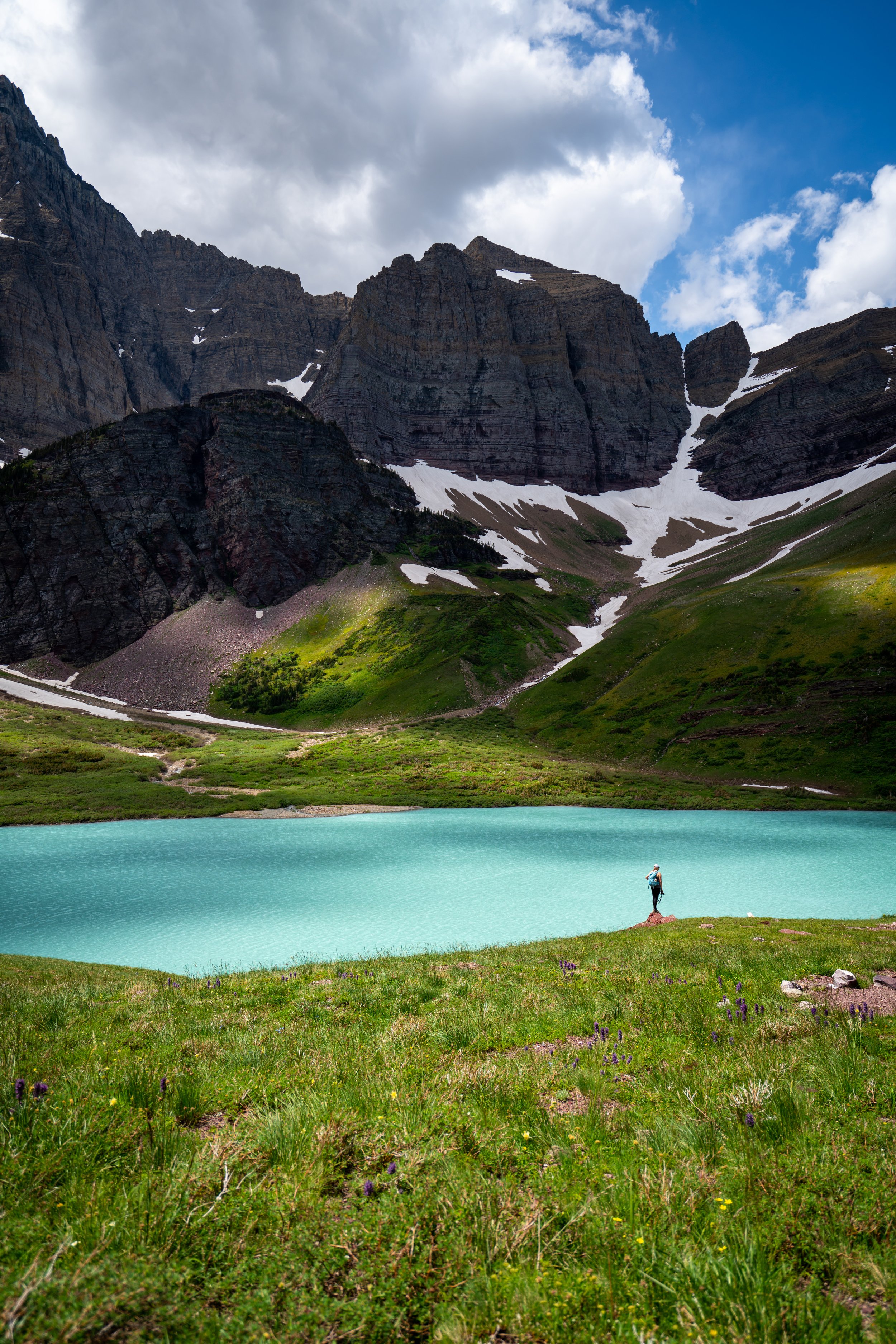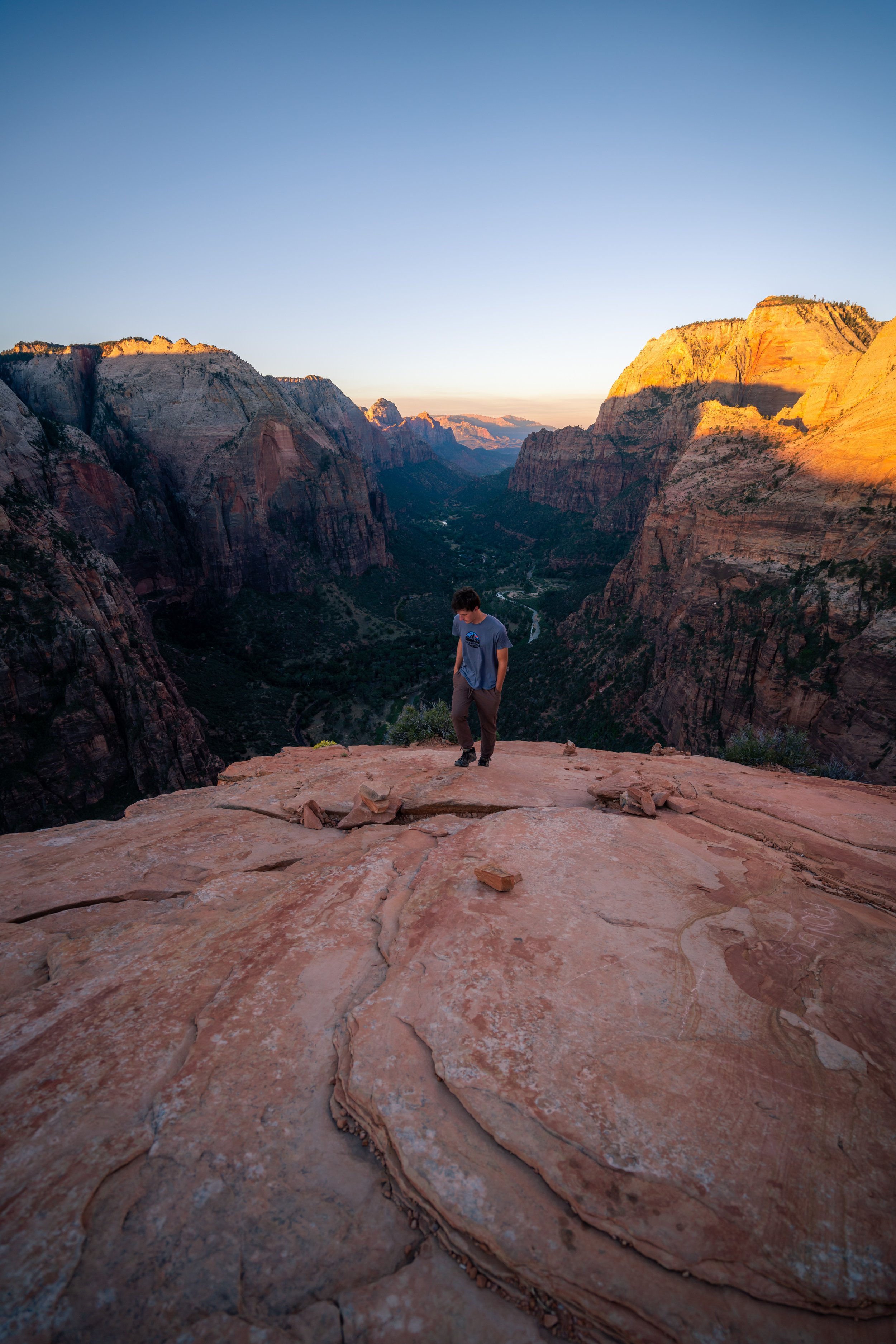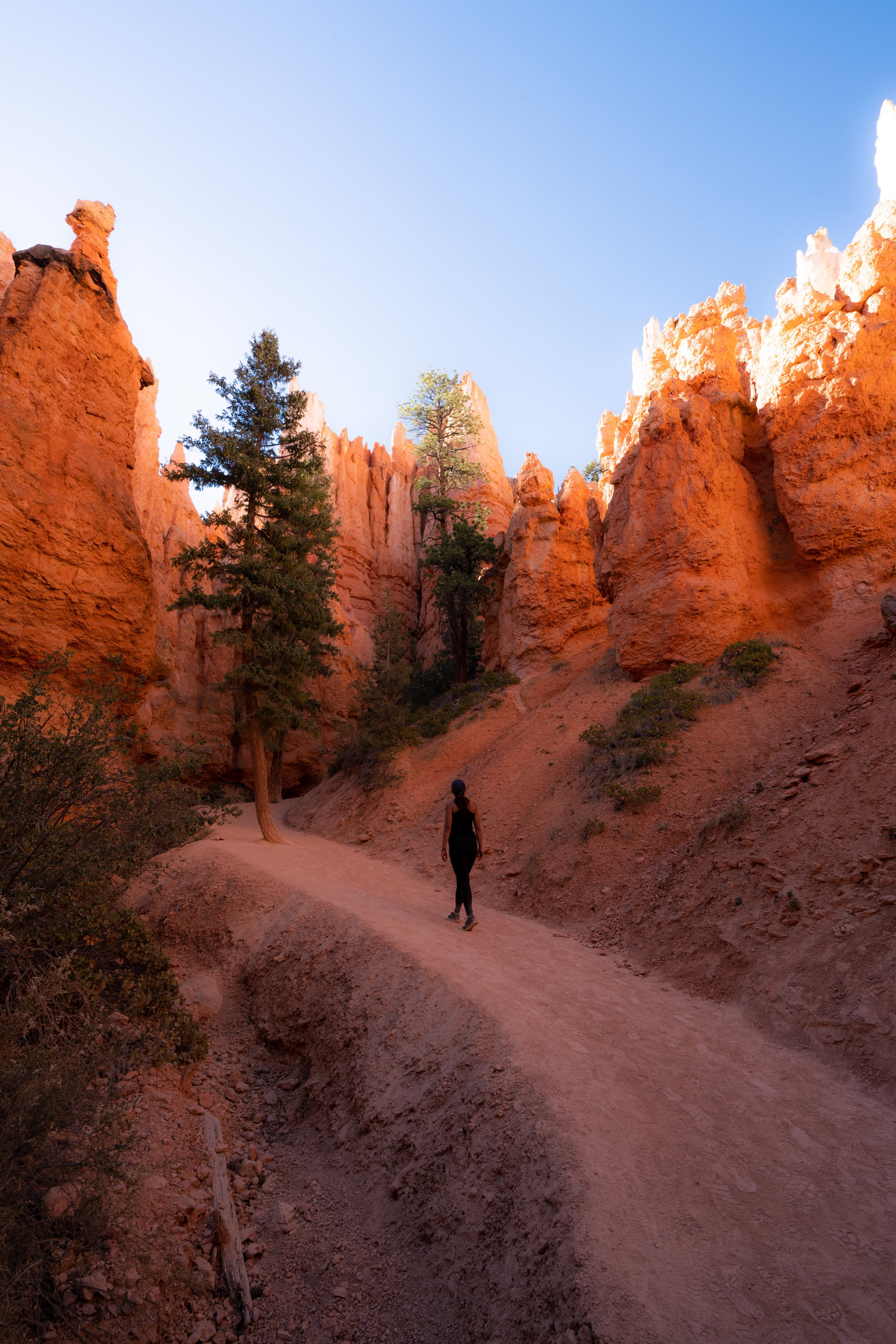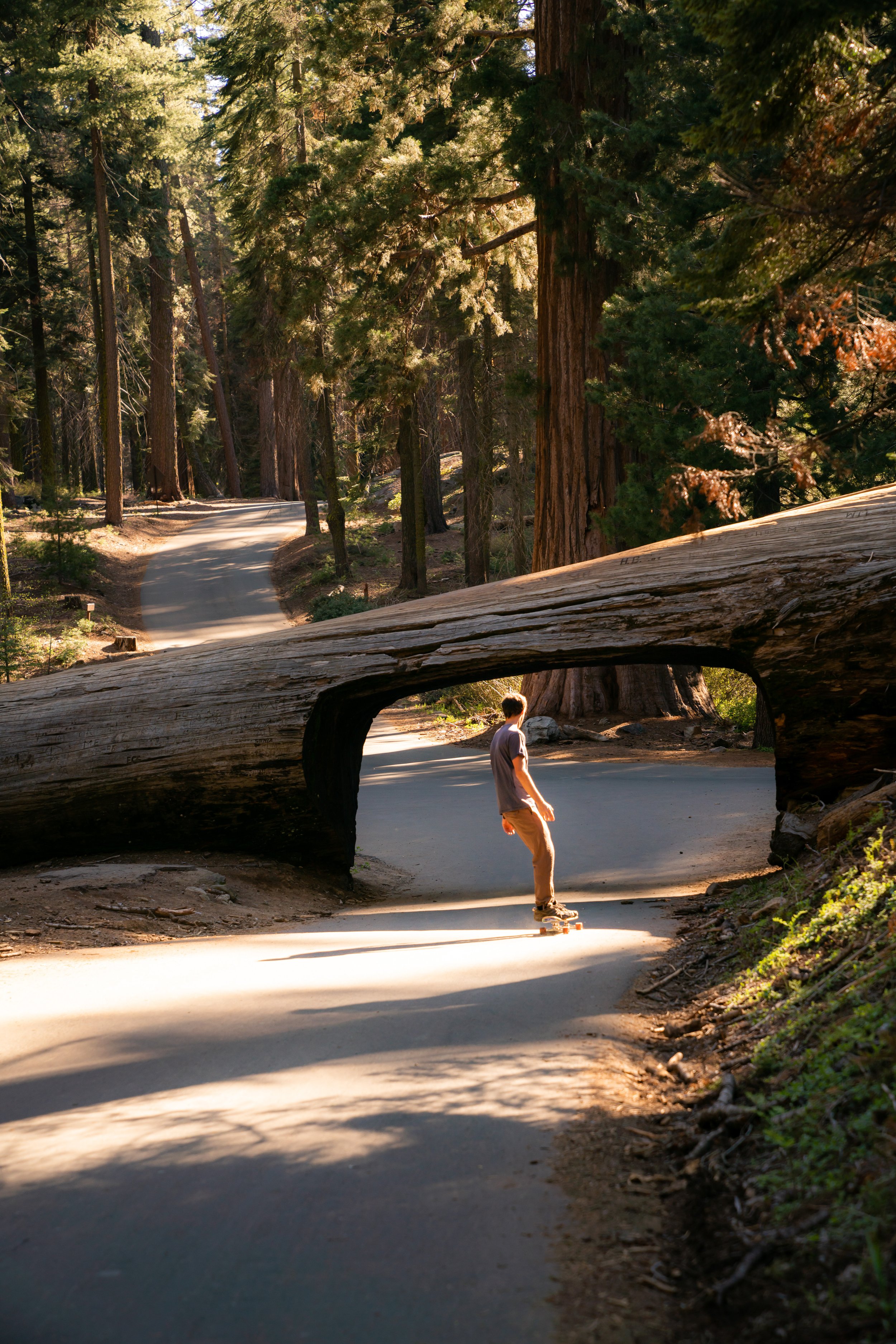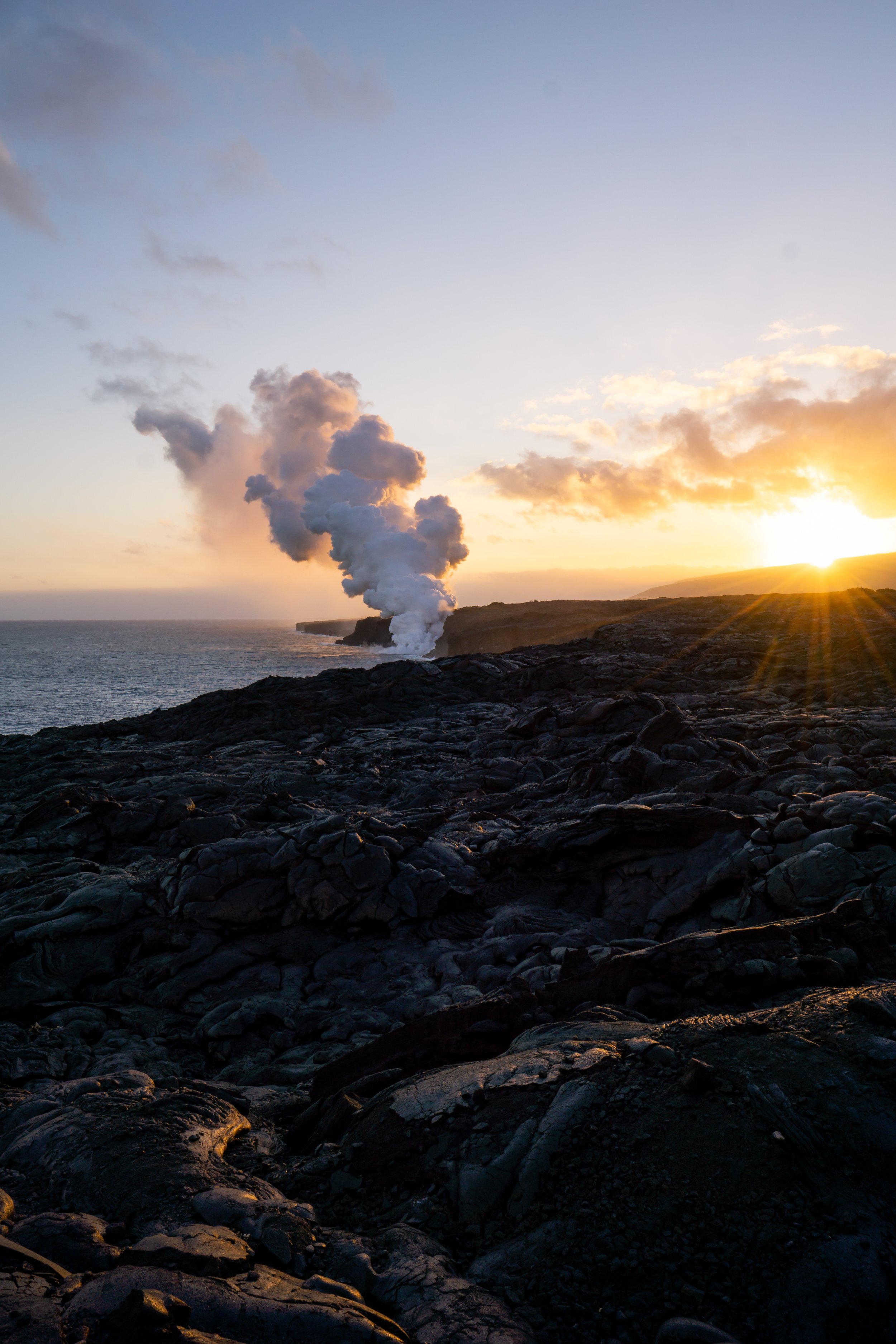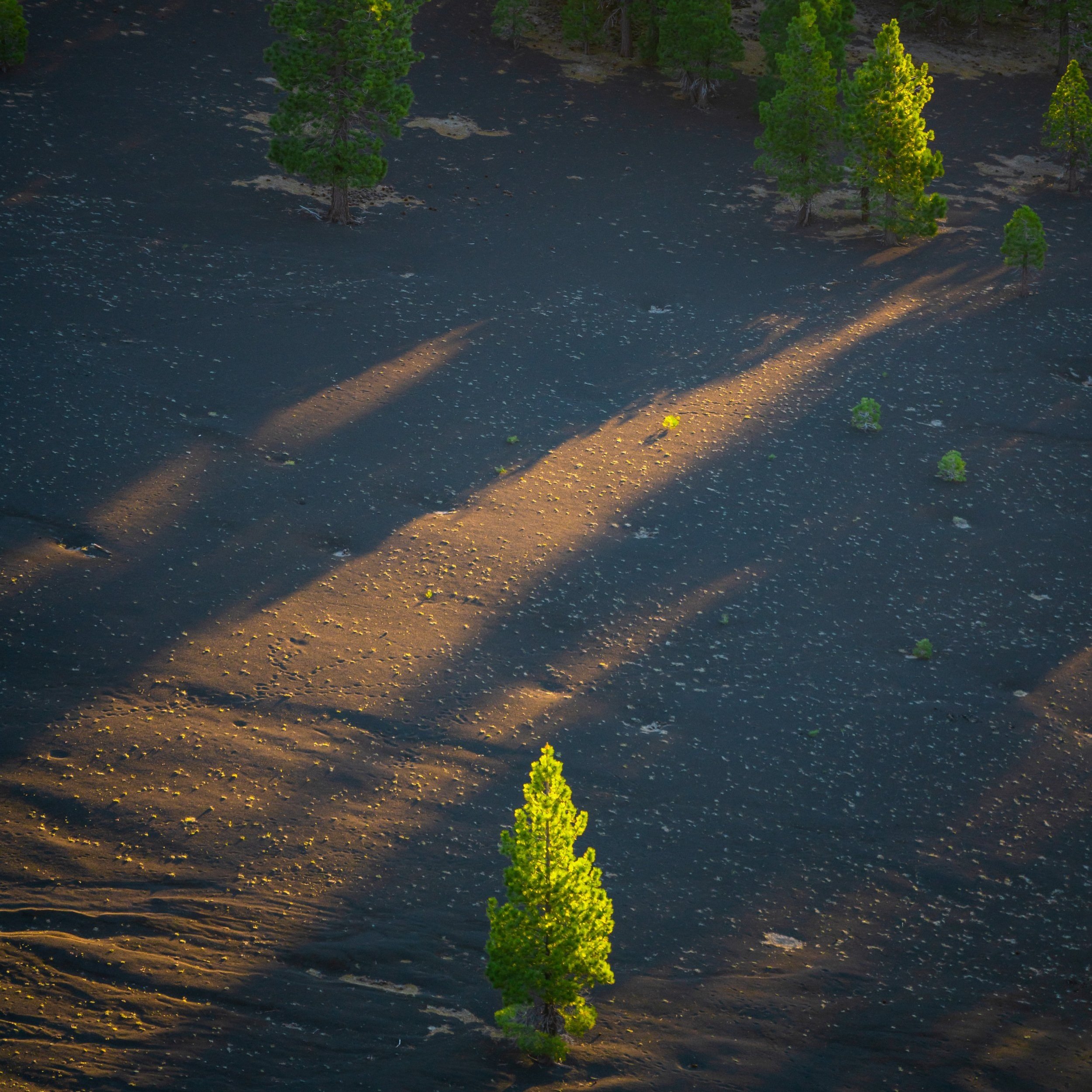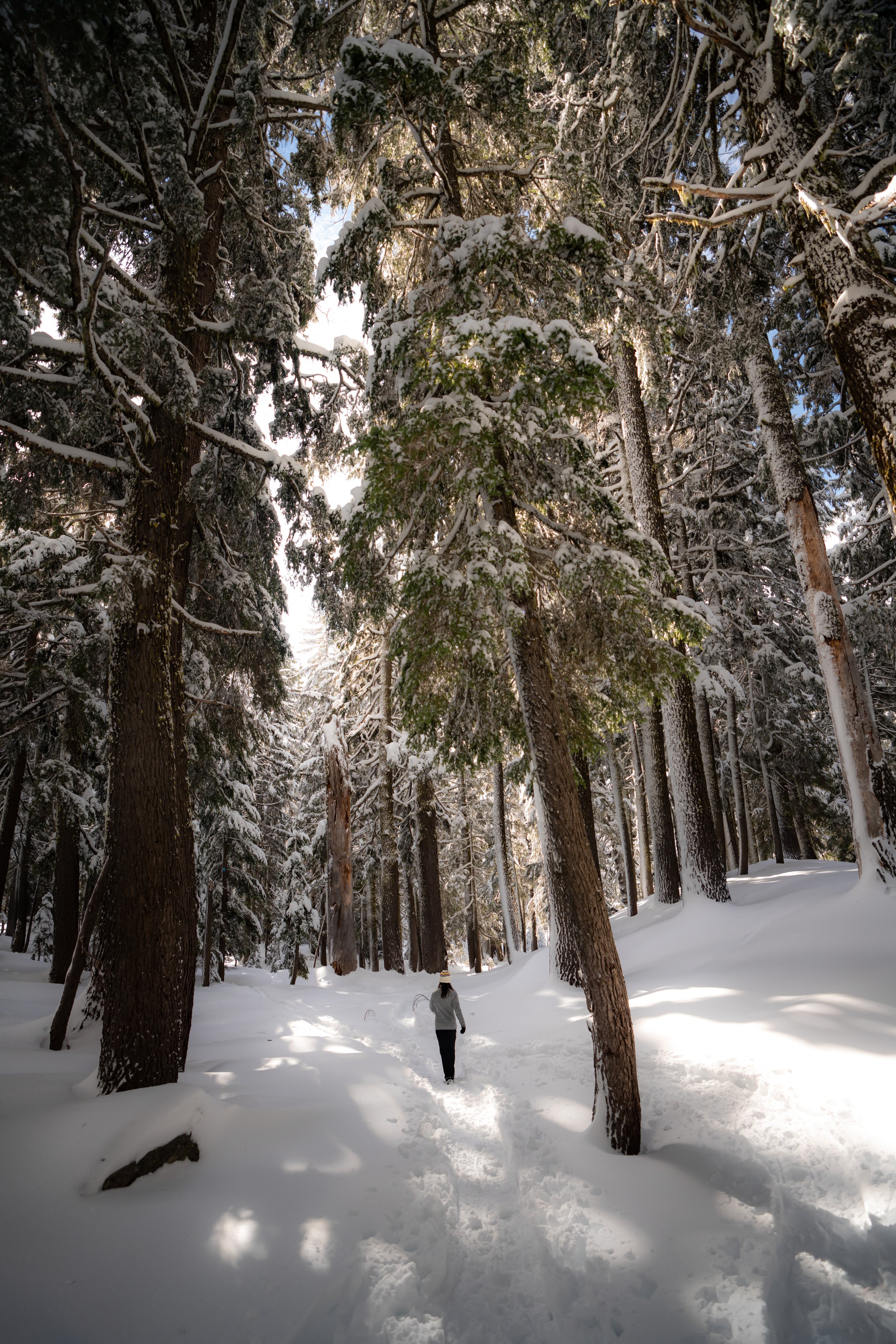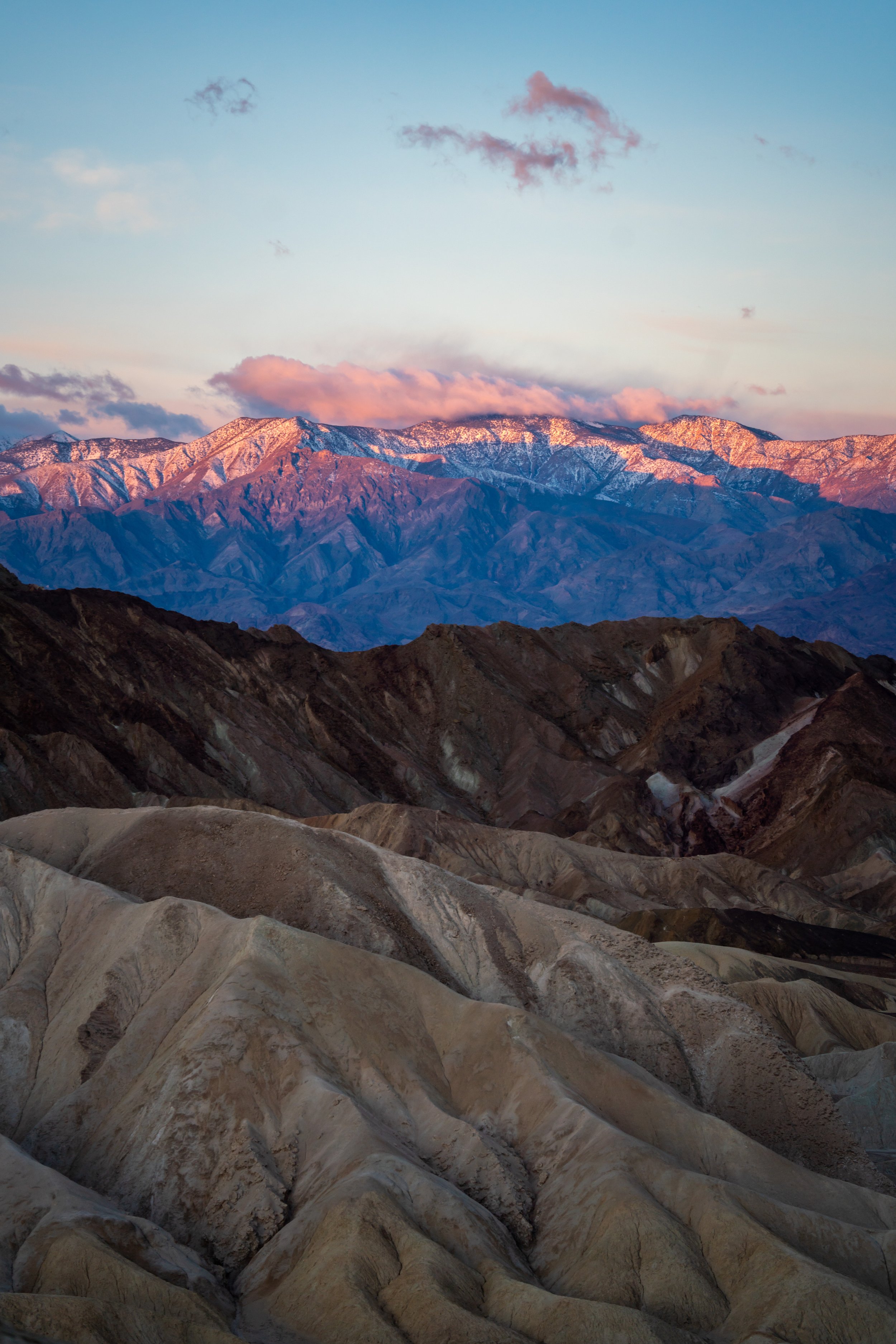Hiking the Cracker Lake Trail in Glacier National Park
Distance: 12.8 miles / 20.6 km
Elevation Gain: ~1,100 ft. / 335 m
The Cracker Lake Trail in Glacier National Park is the best of the best!
By this, I mean that the turquoise-blue waters of Cracker Lake are truly unlike any other within the park—comparable only to the Grinnell Glacier Trail, in my opinion.
This is all to say that the Cracker Lake Trail is truly a stunning and unique one-of-a-kind adventure, and it’s one of my top recommendations for anyone visiting Glacier National Park for the first time!
Cracker Lake Trailhead Parking
Parking for the Cracker Lake Trail is located in the same parking lot as the Many Glacier Hotel.
For this reason, the Cracker Lake Trailhead is the toughest trailhead to find parking at inside the Many Glacier entrance, because somewhere between half to two-thirds of the stalls in the parking lot are already taken by hotel guests.
This is why I recommend arriving before 7 a.m. and making Cracker Lake the first thing you do before anything else in Many Glacier. If not, the parking lot will fill up very fast. However, finding a spot should never be an issue if you’re arriving in the park prior to 6 a.m. to beat the vehicle pass reservation time.
Google Maps Directions: Cracker Lake Trailhead
Hiking Checklist - Glacier
Here is a complete list of must-have things that you will want for any hike in Glacier National Park.
Bear Spray & Holster - If you aren’t flying, don’t rent bear spray! It’s a waste of money. Prepare ahead of time by buying your own, as this may be one of the most important items on this list.
Osprey 3L Water Bladder - The Osprey 3L water bladder is the most universal hiking and backpacking water bladder on the market, and it’s my go-to because of the slide-off seal that allows it to be quickly filled from the top. Additionally, individual parts are easily replaceable, such as the bite valve.
Black Diamond Headlamp - Personally, I recommend the Black Diamond Storm because it is one of the brightest, lightest, and longest-lasting headlamps on the market—and trust me, the weight-to-battery-life ratio really does matter!
Hiking / Trail Running Shoes - Depending on the type of trail, I prefer to use either the Keen Targhee for longer, more rugged hiking or the HOKA Zinal Trail-Running Shoe for lighter, less intense trails. In either case, both have been amazing to me for many years across countless environments, and both can be found in men’s and women’s sizes. - (Men’s Keen / Women’s Keen) (Men’s HOKA / Women’s HOKA)
Blister / Heel Protectors - I swear by these cheap, amazing heel protectors to prevent blisters for nearly every kind of hiking and backpacking that I do!
Waterproof Rain Shell - You never know when it may rain, and I’ve learned over the years that a rain shell is far better than a rain jacket. By this, I mean that it’s best to have something that the water will roll right off of, which is why I recommend the Patagonia Torrentshell 3L available in both men’s and women’s sizes.
High SPF Sunscreen - Packing high-SPF sunscreen is a must for long days outside!
Hiking the Cracker Lake Trail
Overall, the Cracker Lake Trail is a fairly moderate hike, despite its long 12.8 miles (20.6 km) roundtrip distance to the lake.
I say this because the majority of the elevation gain is spread out over the last 4.6 miles (7.4 km), making the Cracker Lake Trail fairly mild.
Cracker Lake-Piegan Pass Junction
Shortly after the trailhead, the Cracker Lake Trail will split with the Piegan Pass Trail.
Go left to keep hiking toward Cracker Lake.
Then, the Cracker Lake Trail remains mostly flat until the 1.8-mile (2.9 km) mark, as it parallels Lake Sherburne toward Canyon Creek.
Lake Sherburne
This photo was taken in mid-August, looking out toward a very dry Lake Sherburne.
Cracker Lake-Horse Loop Junction
At about 1.5 miles (2.4 km), the Cracker Lake Trail comes to the first of two splits for the Cracker Flats Horse Loop.
Go right to stay on the Cracker Lake Trail.
Second Cracker Lake-Horse Loop Junction
Then, where the Horse Loop meets back up with the main Cracker Lake Trail, is also where the trail starts to climb the switchbacks up toward the lake.
Additional Early Season Gear
Depending on the winter snowpack, micro-spikes may be necessary, as the trail goes up the Cracker Lake switchbacks.
This is because shady hikes, like the Cracker Lake Trail, can be covered in snow for much longer than more exposed trails.
I personally use the Yaktrax below.
If you’re hiking the Cracker Lake Trail in August, there may be countless Thimbleberries along the hike, which are edible for humans.
However, expect them to taste a bit different than normal raspberries that you might buy in a store.
However, unlike the Thimbleberries above, Red Baneberries are not edible.
They are considered poisonous and can cause a whole host problems should anyone consume them.
Canyon Creek
The last part of the Cracker Lake Trail crosses over to the east side of Canyon Creek, which makes for a nice mental checkpoint that you’re getting closer to Cracker Lake.
Finally, if you notice these Black Elderberries, they should also not be consumed raw, as they can also cause problems, similar to the Red Baneberries shown above.
Cracker Lake
Once you reach Cracker Lake, you can hike as far or as little as you want along the east side of the lake, as there are a number of be small trails that branch off down to the lake.
Warning
One should never dive into Cracker Lake, as the depth of the water cannot be seen, on account of the milky turquoise color.
Cracker Lake Campground
The Cracker Lake campground is located at the far end of Cracker Lake, where the National Park Service provides a place to hang your bear bag as well as a pit toilet near the flat areas to pitch a tent.
Both of the line and the bag below is exactly what I use to make a bear bag when I camp in the backcountry.
These are two completely unedited iPhone photos, so yes, the water really is that blue!
Warning
Afternoon thunderstorms in high Mountain West areas, such as this, are a serious concern during the summer monsoon season.
Even if the weather forecast doesn’t predict any storms, I can tell you from personal experience that they may show up out of nowhere and can put you and your entire group in a very dangerous situation.
I say this to emphasize the importance of turning around at the first sign of lightning, thunder, or even heavy cloud buildup. However, if you ever get caught in a storm unsuspectingly, follow the steps linked below to reduce the risk of getting struck.
U.S. Forest Service: Lightning Safety Tips
More Glacier Adventures
If you’re interested in reading about some more amazing adventures within Glacier National Park, check out my separate posts below!
Best Way to Find Places to Stay!
Wherever I travel, I love to start my search for places to stay on VRBO.
Even if I don’t end up booking through them, I think it’s one of the best ways to see what’s in the area!
Best Way to Book Rental Cars!
I travel quite a bit, and I know firsthand that finding a good rental car deal can be a challenge, but that’s why I recommend comparing all of your options with Discover Cars.
In short, Discover Cars is a well-known, reputable business that allows you to search for the best deal across companies, and they have the best full-refund cancellation policy I’ve ever seen, valid up to 72, or sometimes even 48, hours prior to your reservation!
Book Here: Discover Cars
Safety
Always be mindful that Glacier National Park and the surrounding area is Grizzly Bear country. Therefore, you need to be hiking with bear spray and know how to react in the event of a Black or Brizzly Bear encounter.
Aside from wildlife, Glacier National Park, like any area in the Mountain West, is known for its violent afternoon thunderstorms, which are more typical in the warmer summer months than other times of the year.
That said, it’s important to check the local forecast before setting off on any adventure, as lightning strikes are not uncommon in and near mountain ranges across the West. I have personally been knocked to the ground by a strike that hit near me in the past, and I confidently say that it’s an experience you don’t want to live through. This is why I highly recommend checking Mountain Forecast for any high-elevation adventures you may be interested in—especially when climbing a summit.
Finally, know that when micro-spikes are necessary for an early-season adventure, micro-spikes are never supposed to be a substitute for conditions that require crampons.
As always, find the most up-to-date information and conditions on the official National Park website.
National Park Service: Glacier National Park
U.S. National Parks Pass
Did you know that the same America the Beautiful Pass that grants access to all 63 U.S. National Parks can be purchased in advance at REI?
Yes, you can save time when you arrive by purchasing your National Park pass, along with your other outdoor gear, at REI before traveling to the park!
More U.S. National Parks
If you’d like to read more about some of my best recommendations when visiting other U.S. National Parks, check out some of my other posts below!
Disclaimer
All information provided on this blog is for informational purposes only and is not intended to be a substitute for information or advice from qualified professionals or managing agencies.
Noah Lang Photography LLC makes no representations or warranties regarding the accuracy or completeness of the information provided here, and readers should use their own discretion, judgement, and seek professional advice where it is appropriate.
Furthermore, Noah Lang Photography LLC shall not be held responsible for any injuries, lost individuals, or legal issues arising from the use of information provided on this website, and if applicable, the above safety disclaimer should be referenced to provide a generic overview of the risks involved.
All said, the content on this blog is for the sole use of Noah Lang Photography LLC, and unauthorized use or reproduction of this content is strictly prohibited.
Disclosure
This post is not sponsored.
However, some of the links in this post are affiliate links, which means that I may earn a small commission if a purchase is made through one of those links. This commission comes at no additional cost to you, and I only recommend products that I personally use and believe will add value to my readers. Thank you for your support, which enables me to continue creating more!
To read the full privacy policy, click here.

About This Blog
Noah Lang Photography, also known as @noahawaii, is 100% reader-supported!
I do not accept guest articles or sponsored content of any kind on my blog, which is why, if you enjoy the outdoor and travel content I create, please consider buying me a coffee!
I appreciate your support, which helps me continue to keep this blog alive!














